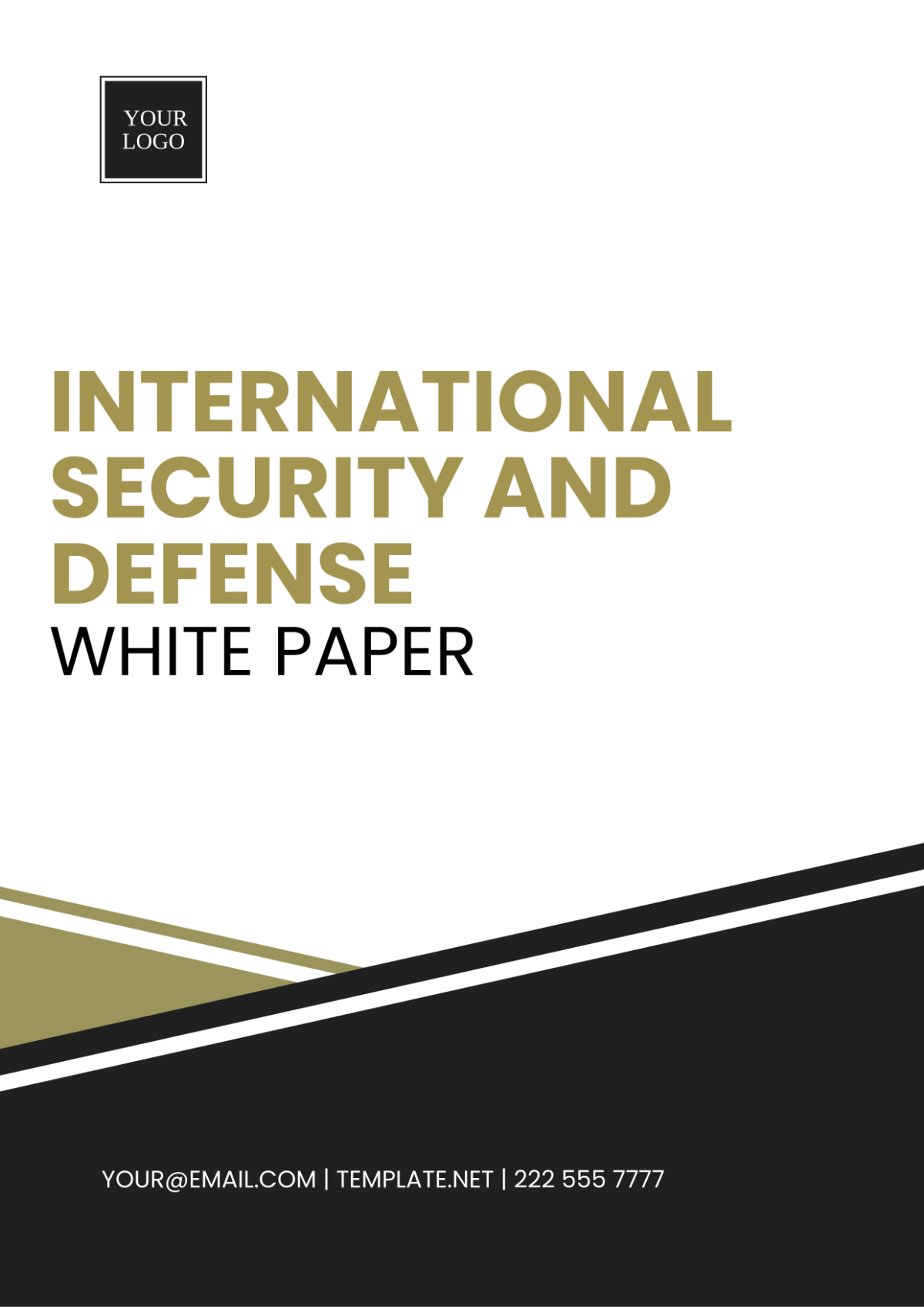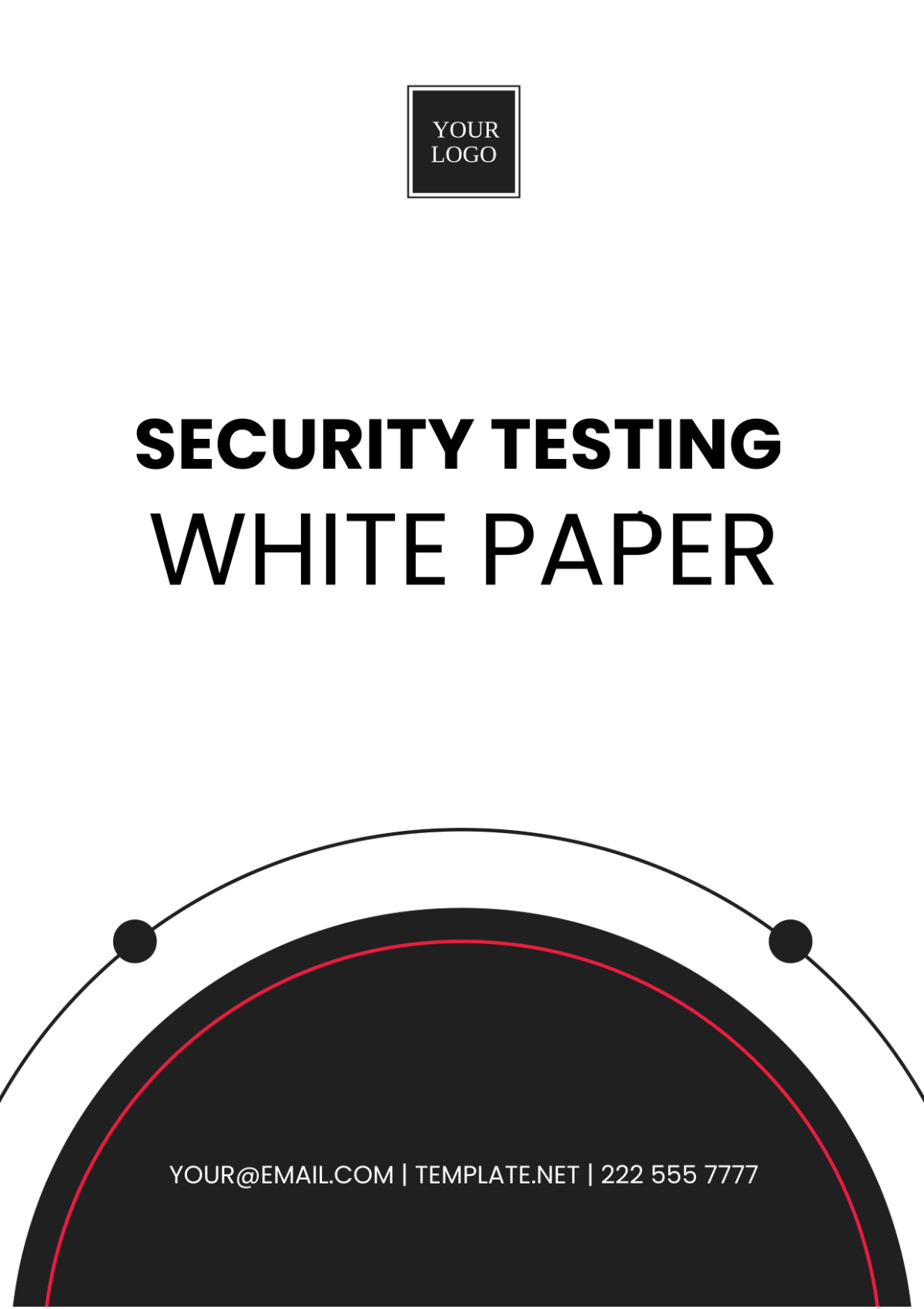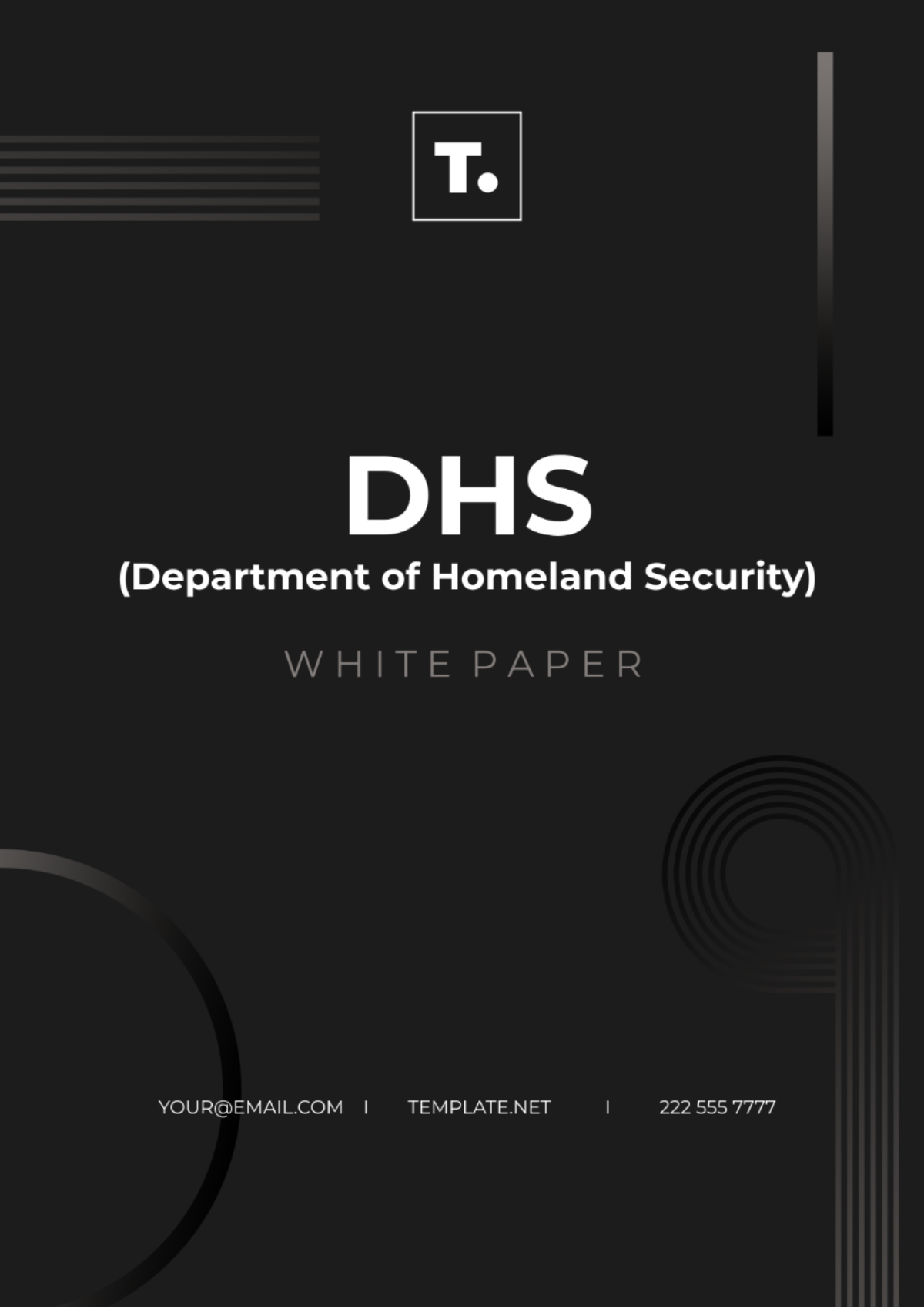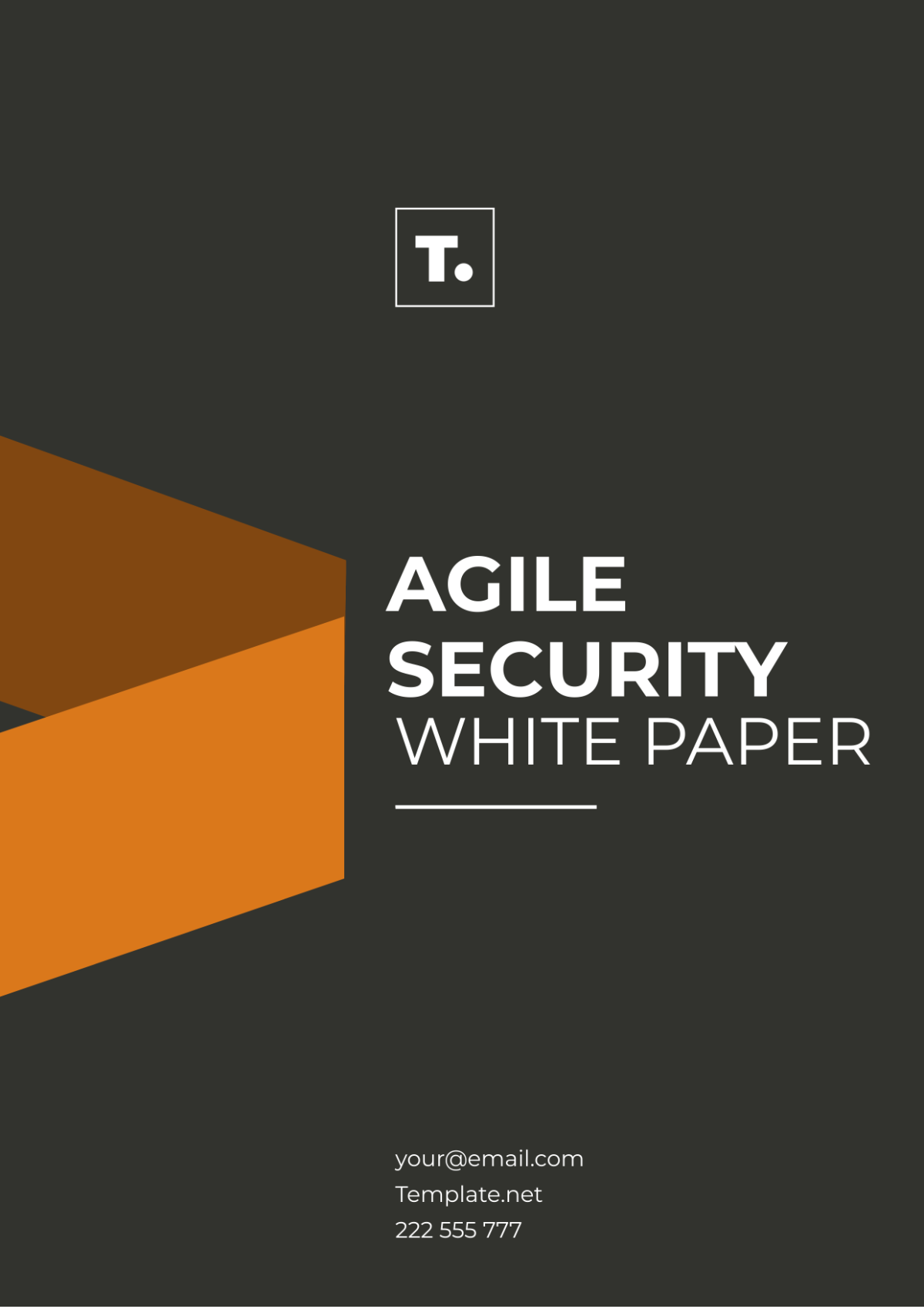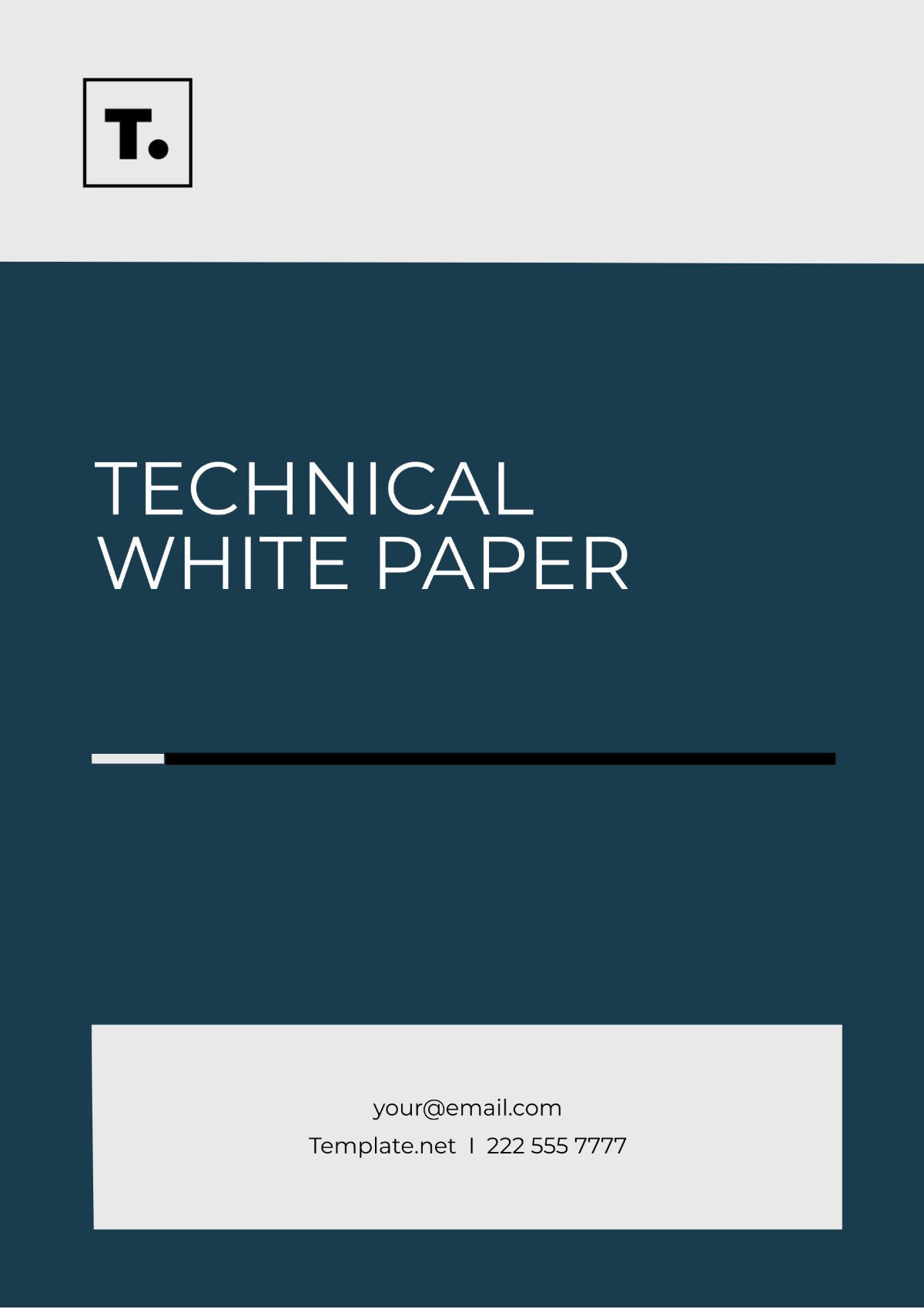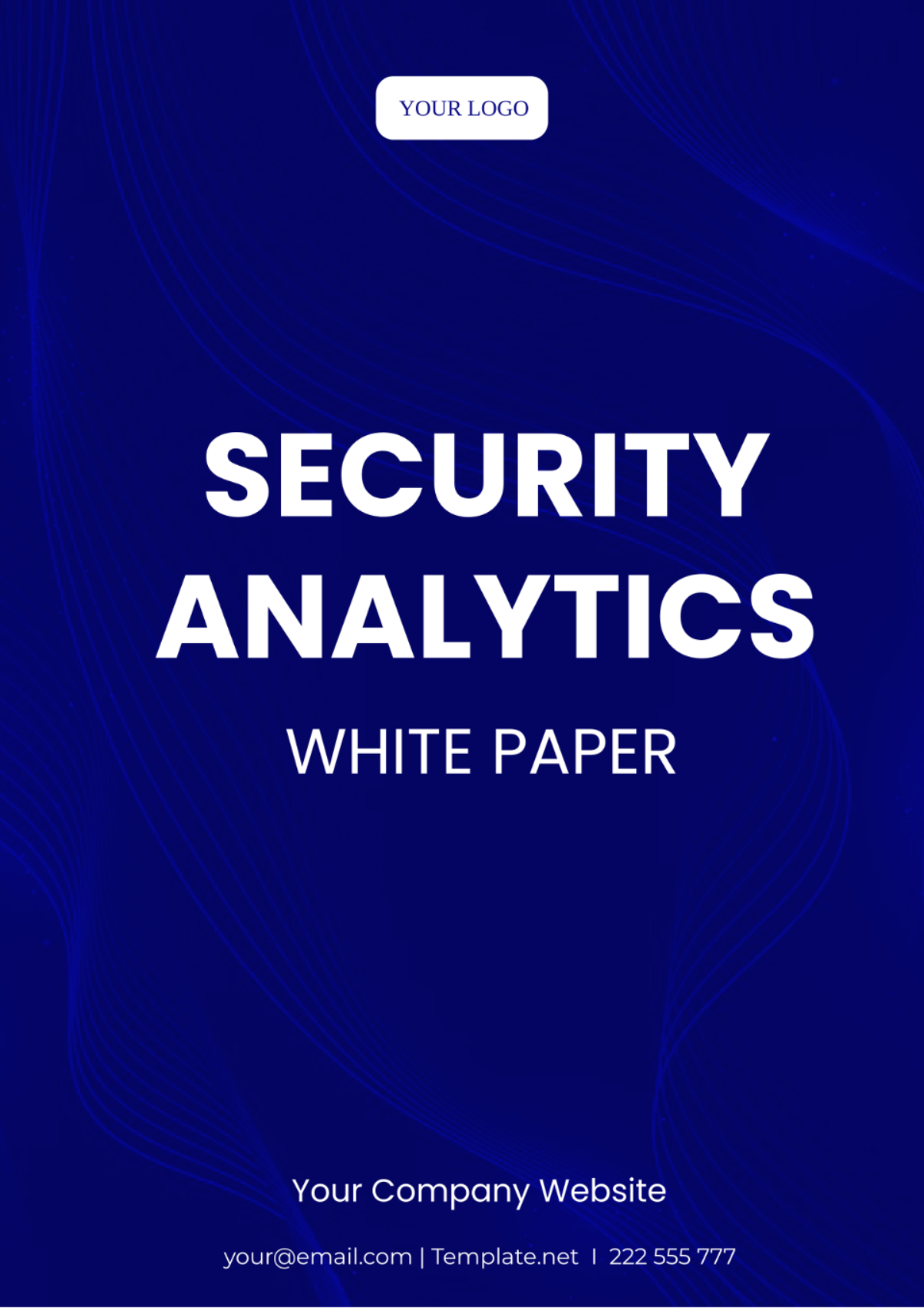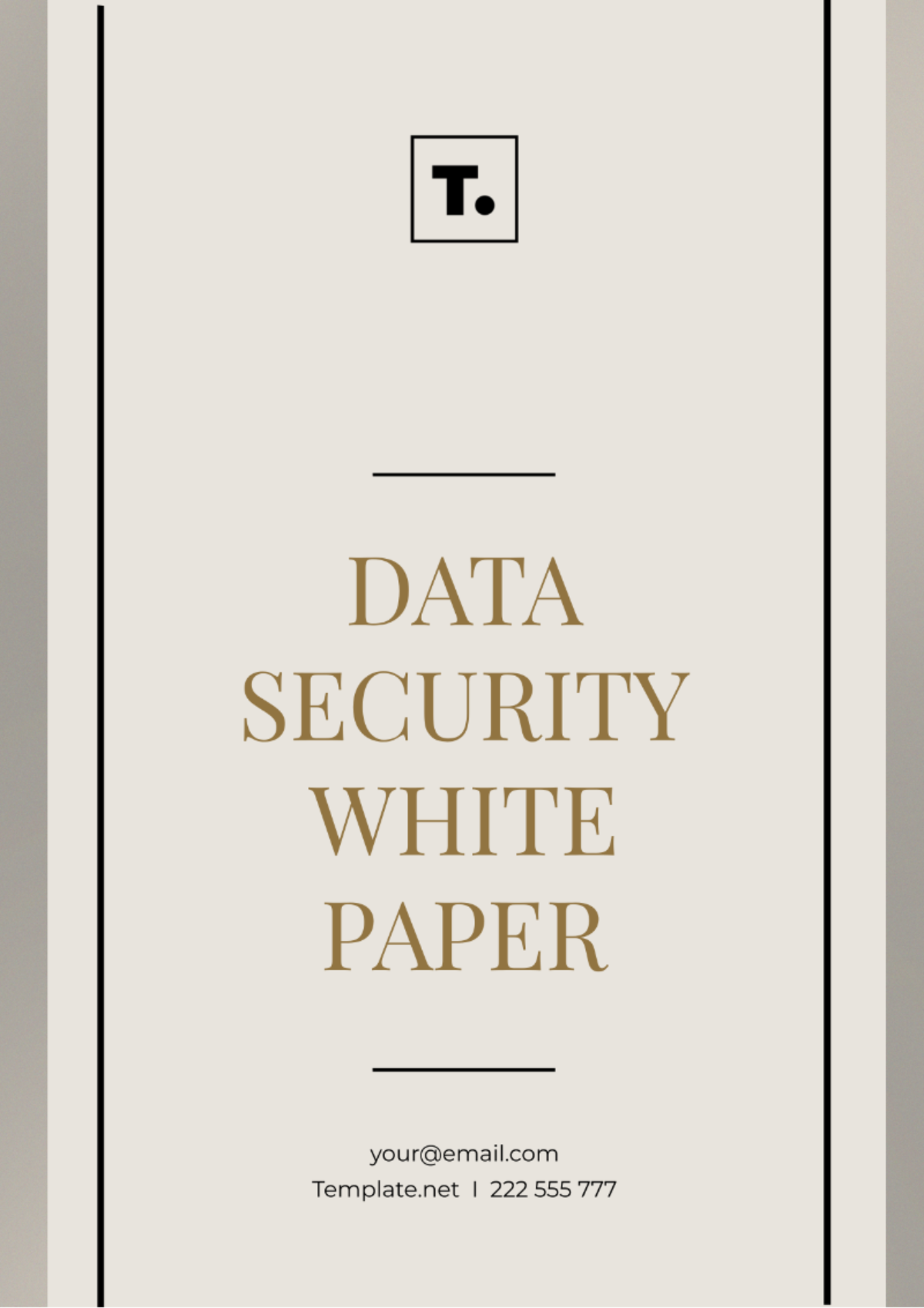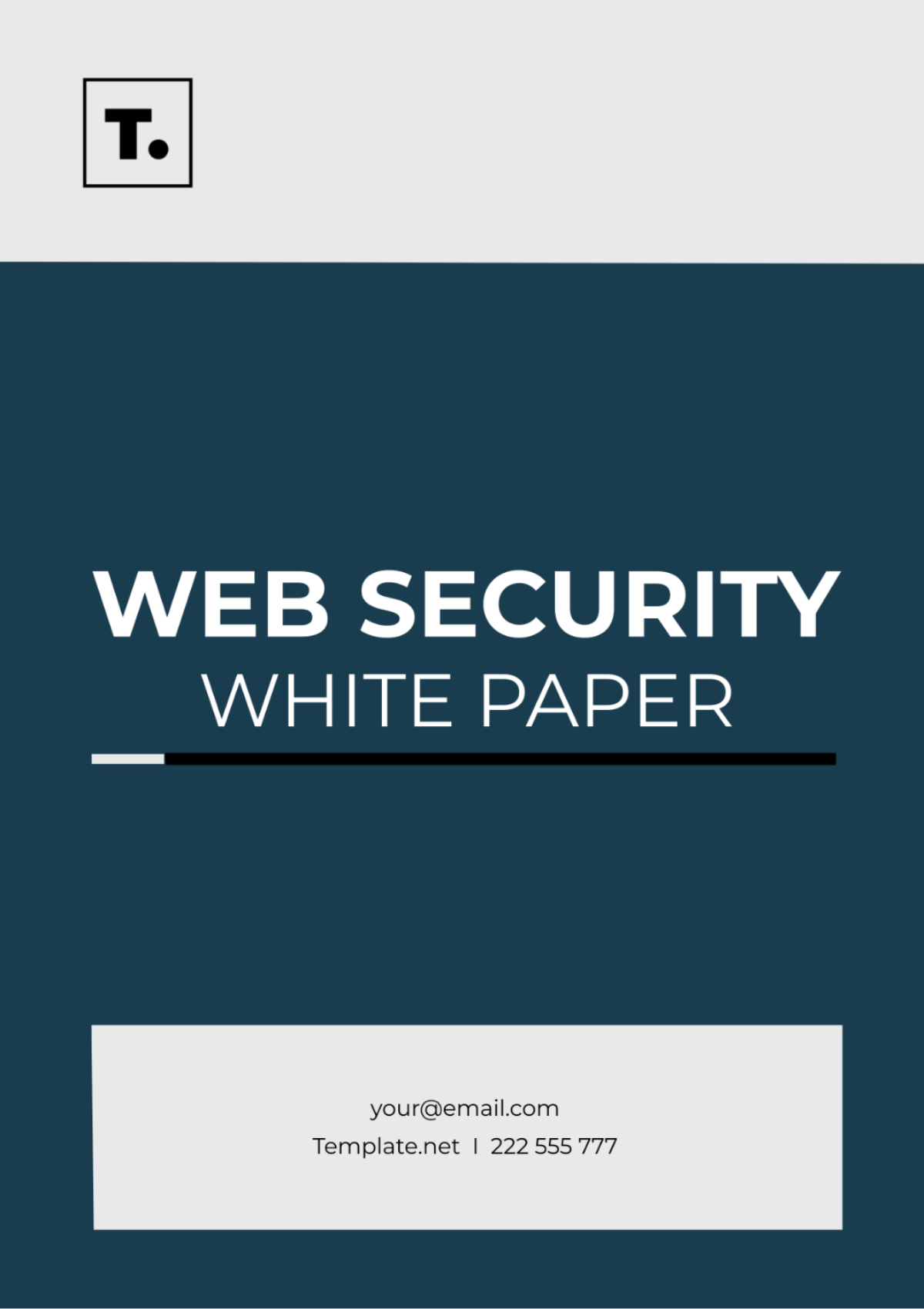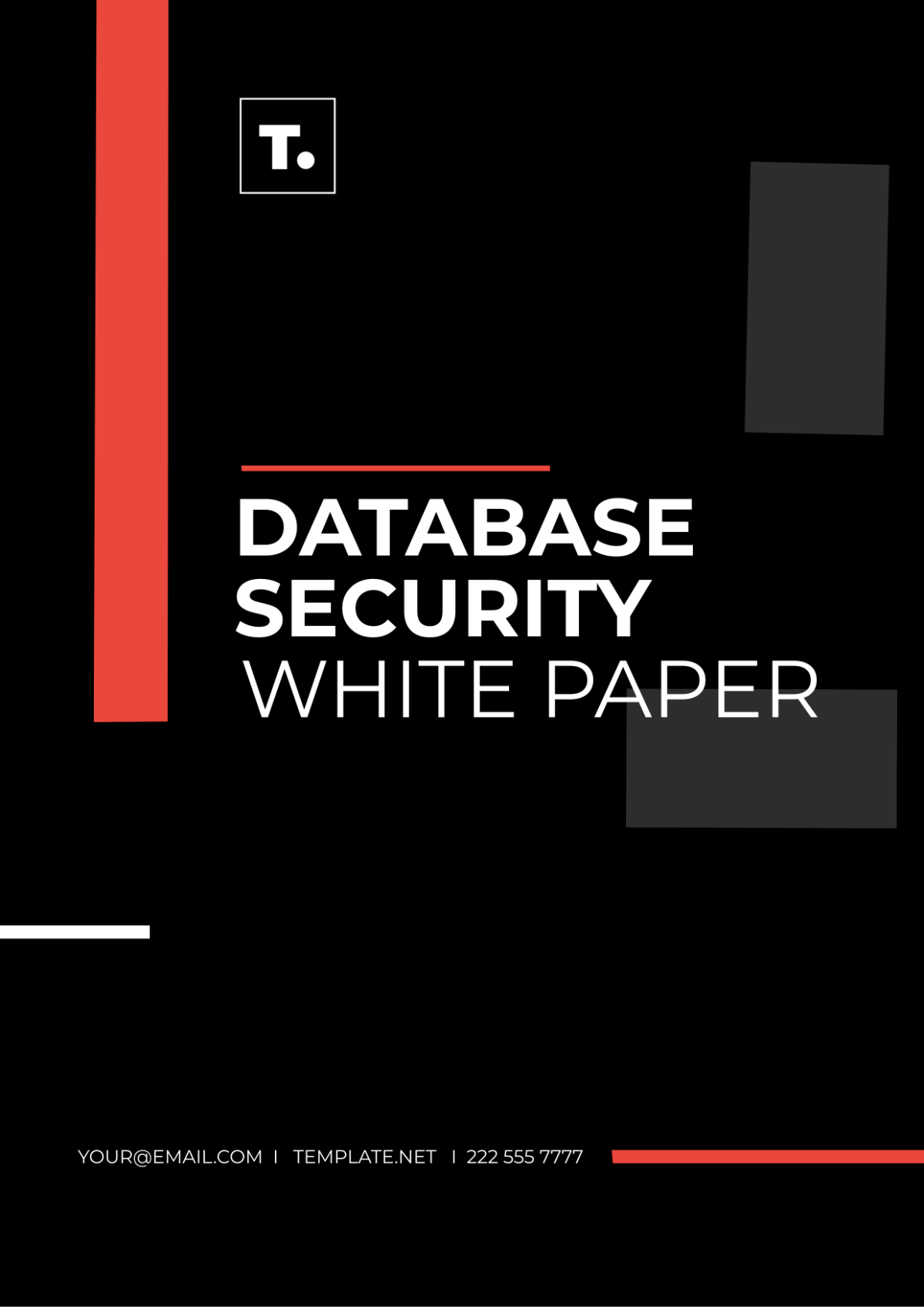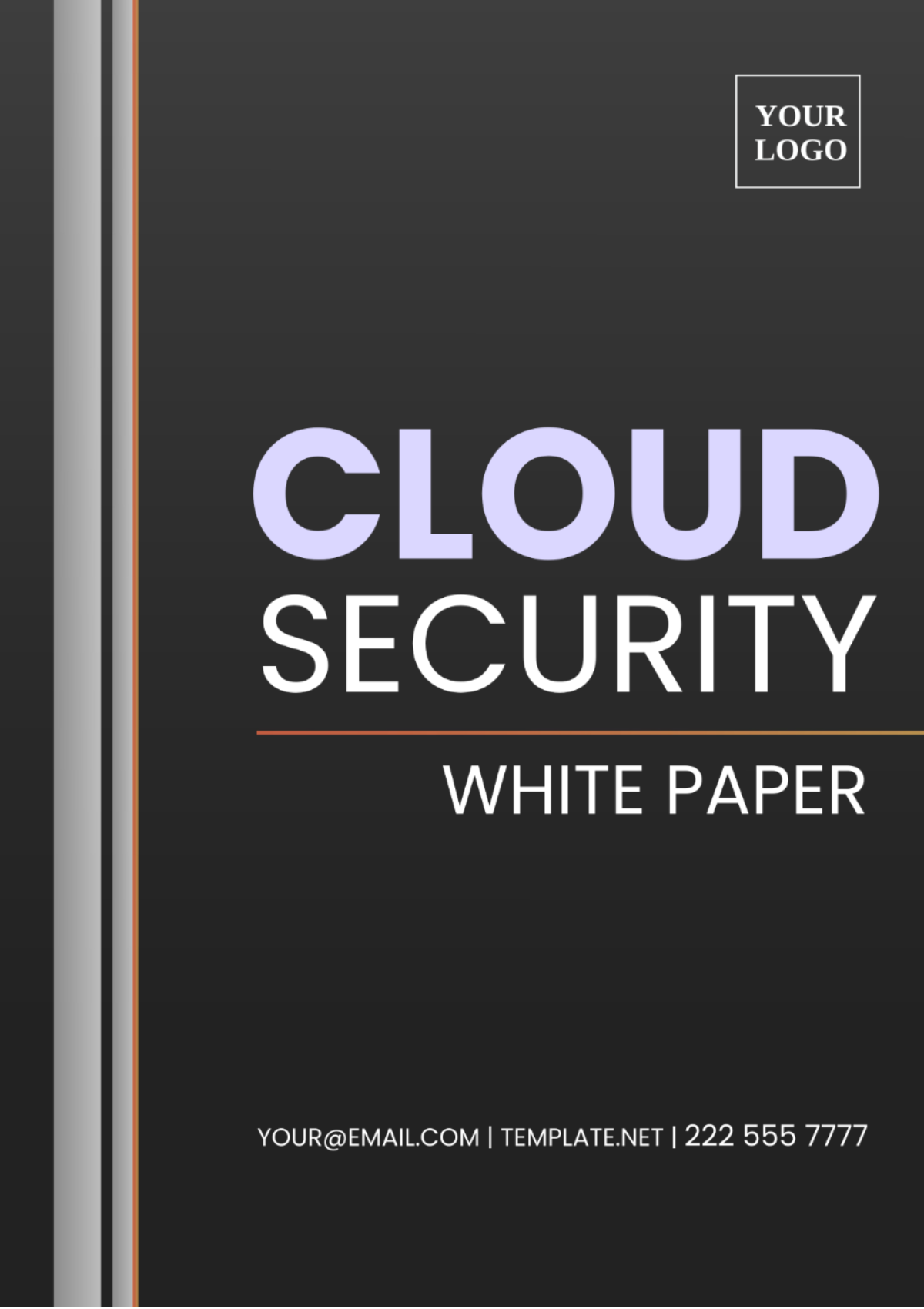IT SECURITY WHITE PAPER
_____________________________________________________________________________________
_____________________________________________________________________________________
About the Author:
[Your Name] is a cybersecurity expert with [Your Years of Experience] years of experience in IT security.
For more information, please contact:
[Your Company Name]
[Your Contact Information]
_____________________________________________________________________________________
I. Executive Summary

A. Overview
In this white paper, we present a comprehensive guide to IT security, focusing on strategies to protect organizations from evolving cyber threats and breaches.
B. Key Findings and Recommendations
Identification of common IT security vulnerabilities and attack vectors.
Analysis of best practices and methodologies for securing IT systems and data.
Insights into the importance of proactive security measures in mitigating cyber risks.
Implementing robust endpoint protection solutions to defend against malware and ransomware.
Conducting regular security assessments and penetration testing to identify and remediate vulnerabilities.
Establishing a robust incident response plan to mitigate the impact of security incidents and breaches.
II. Introduction
A. Background
[Your Company Name] recognizes the critical importance of IT security in safeguarding sensitive data, maintaining business continuity, and protecting brand reputation.
B. Objectives
This white paper aims to:
Provide organizations with a comprehensive understanding of IT security threats and vulnerabilities.
Offer practical guidance for implementing effective IT security measures.
Highlight the significance of proactive security practices in safeguarding against cyber threats.
III. Understanding IT Security
A. Definition of IT Security
IT security encompasses the policies, procedures, and technologies designed to protect IT systems, networks, and data from unauthorized access, misuse, or modification.
B. Key Components of IT Security
Endpoint Security: Protecting endpoints such as computers, laptops, and mobile devices from security threats.
Network Security: Securing network infrastructure and traffic to prevent unauthorized access and data breaches.
Data Security: Ensuring the confidentiality, integrity, and availability of data through encryption, access controls, and data loss prevention (DLP) solutions.
IV. Common IT Security Threats
_____________________________________________________________________________________
Title: Frequency of Malware and Ransomware Attacks Over Time
_____________________________________________________________________________________
A. Malware and Ransomware
Malicious software is designed to infiltrate IT systems, steal sensitive information, or extort money from victims.
B. Phishing and Social Engineering
Deceptive tactics are used to trick users into revealing confidential information or performing unauthorized actions.
C. Insider Threats
Employees, contractors, or business partners who misuse their access privileges to steal data or disrupt operations.
V. Best Practices for IT Security

A. Patch Management
Regularly updating software and firmware to address known vulnerabilities and security weaknesses.
B. Access Controls
Implementing role-based access controls (RBAC) and least privilege principles to limit user access to sensitive data and resources.
C. Security Awareness Training
Providing employees with training and education on IT security best practices, including how to recognize and respond to security threats.
VI. Emerging Trends in IT Security
A. Zero Trust Architecture
Moving away from traditional perimeter-based security models to zero trust principles that verify every access request.
B. Cloud Security
Leveraging cloud-native security solutions to protect data and workloads in cloud environments.
VII. Case Studies
_____________________________________________________________________________________
Title: "Comparison of IT Security Measures Implemented by Global Corporation and Small Business"
_____________________________________________________________________________________
A. [Case Study 1: Global Corporation]
[Description of how a global corporation successfully implemented IT security measures, highlighting key strategies and outcomes.]
B. [Case Study 2: Small Business]
[Exploration of how a small business enhanced IT security to protect customer data and comply with regulatory requirements.]
VIII. Conclusion
A. Recapitulation
IT security is essential for organizations to protect their assets, maintain regulatory compliance, and safeguard against cyber threats.
B. Call to Action
[Encourage readers to prioritize IT security initiatives and collaborate with trusted security partners to strengthen their security posture.]
IX. Appendix
A. Glossary of IT Security Terms
Endpoint Security: The protection of computer networks that are remotely bridged to client devices.
Patch Management: The process of managing a network of computers by regularly deploying updates to software.
Incident Response Plan: A set of procedures developed for detecting, responding to, and limiting the effects of a security incident.
B. IT Security Checklist
Regular Software Updates: Ensure that all software and firmware are regularly updated to patch known vulnerabilities.
User Access Controls: Implement strict access controls to limit access to sensitive data and resources.
Employee Training: Provide ongoing training to employees on IT security best practices and how to identify and report security incidents.
X. References
Aon Corporation. (n.d.). Aon Cyber Solutions. Aon.com. Retrieved April 23, 2024, from https://www.aon.com/apac/cyber-solutions
Cloud security and compliance for dummies guide. (n.d.). Paloaltonetworks.com. Retrieved April 23, 2024, from https://start.paloaltonetworks.com/cloud-security-compliance-dummies-guide
_____________________________________________________________________________________

